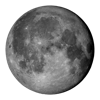Planets Visible Tonight from Assisi, Italy
This page shows planetary visibility conditions for Assisi, Italy
(
At a Glance
| Planet | Visibility | Notes | Mag | Elongation |
|---|---|---|---|---|
| Mercury | After sunset | Sets at 21:54 | 0.83 | 25° E |
| Venus | Before sunrise | Rises at 03:01 | -4.09 | 42° W |
| Mars | Beginning of the night | Sets at 23:20 | 1.45 | 55° E |
| Jupiter | Before sunrise, difficult | Rises at 04:53 | -1.89 | 11° W |
| Saturn | Most of the night | Transits at 06:06 | 0.91 | 106° W |
| Uranus | End of the night | Rises at 02:30 | 5.81 | 48° W |
| Neptune | Most of the night | Transits at 06:06 | 7.73 | 106° W |
Moon: Full,
Planet Visibility Details
Mercury
sets
Venus
is in favorable conditions for early morning observations. It
rises
Mars
will be in good visibility conditions after sunset and during the first part of the night.
It sets at
Jupiter
will be difficult to observe because it rises only
Saturn
will be in good visibility conditions for most part of the night.
It rises at
Uranus
is in good visibility conditions towards the end of the night.
It rises at
Neptune
will be in good visibility conditions for most part of the night.
It rises at










